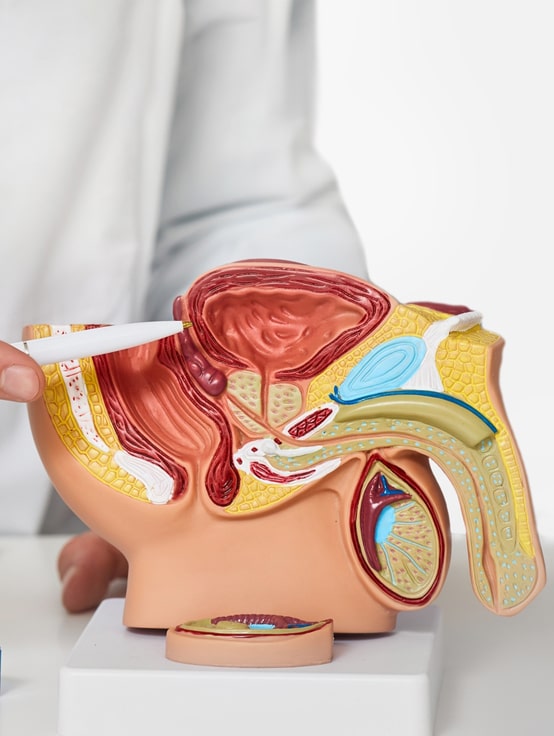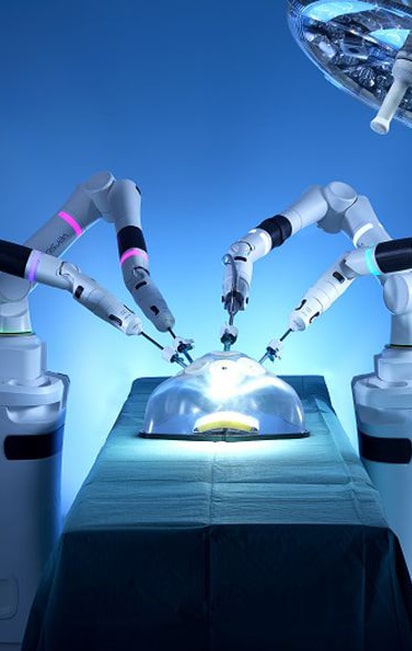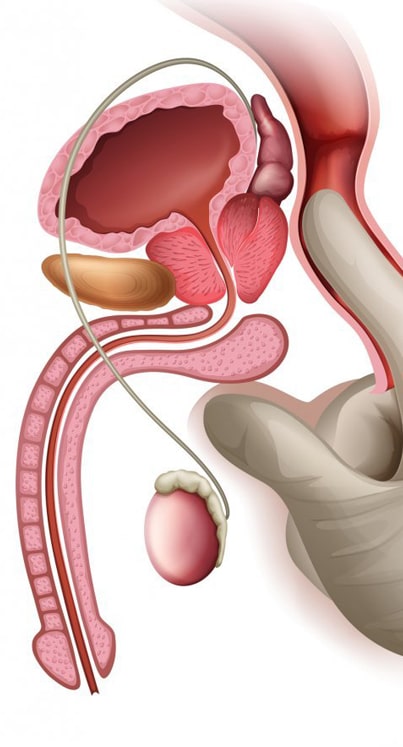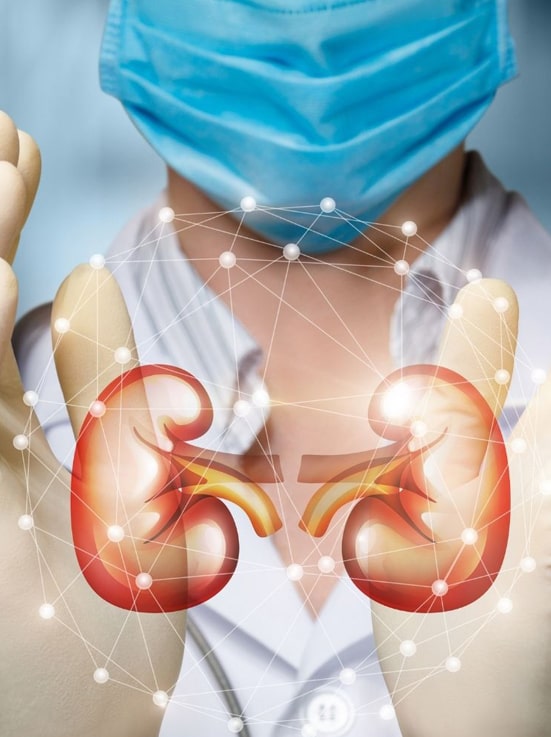A urologist is a physician who specializes in the male reproductive and urinary system.
They diagnose and treat problems related to the kidneys, bladder, urethra, prostate and male genitalia,
as well as infertility in men.
They perform both open and laparoscopic surgical procedures to treat these conditions.
Urologists also specialize in the treatment of kidney stones and diseases of the lower urinary tract.
Some conditions, diseases and their treatments in urology include:

Prostate cancer treatment
Treatment of prostate cancer depends on several factors, such as the stage of the cancer, the patient’s age and general health.
Common treatments include surgery, radiation therapy and hormone therapy.
Surgery, such as radical prostatectomy, is effective in treating early stage prostate cancer and can be curative. Radiation therapy, both external and internal, is also effective and is used to treat both early and advanced cancer. Hormone therapy is used to reduce testosterone levels, which is necessary for prostate cancer growth.
In terms of new treatments, immune therapies and targeted therapies are being investigated for the treatment of prostate cancer.
Immune therapies, such as monoclonal antibodies, help strengthen the immune system to attack and destroy cancer cells.
Targeted therapies, such as androgen synthetase enzyme inhibitors, specifically target prostate cancer cells.
In addition, studies are underway to improve the accuracy of prostate cancer diagnosis and treatment, such as the use of artificial intelligence and machine learning to analyze magnetic resonance images and improve the accuracy of prostate biopsy.

Robotic surgery in urology
Robotic surgery in urology is a surgical technique that uses a robot to assist the surgeon in performing procedures. The robot, controlled by a surgeon, has very precise and flexible surgical instruments, which allow for greater precision and a three-dimensional view during surgery.
Robotic surgery has been used to perform a variety of urological procedures, such as radical prostatectomy (removal of the prostate), nephrectomy (removal of the kidney) and urological reconstructive surgery.
In terms of new discoveries, new techniques and tools are being investigated to improve the accuracy and efficiency of robotic surgery. This includes the use of surgical navigation technologies, which allow for greater control and precision during surgery, and the use of artificial intelligence and machine learning to improve the planning and execution of surgery.
In general, robotic surgery is considered safe and effective for treating urological diseases, and has been shown to have a similar or better success rate than open or laparoscopic surgery. However, it is important to keep in mind that not all patients are candidates for robotic surgery, and that the surgeon must evaluate each case individually to determine if it is the best option.
Male infertility and assisted reproduction
Male infertility refers to a man’s inability to conceive a child. It can be caused by a variety of factors, such as problems with sperm production, problems with sperm quality, problems with ejaculation, hormonal disorders, and problems with the testicles or reproductive ducts.
Treatment of male infertility depends on the underlying factor, but may include hormone therapies, surgery, sperm therapy and assisted reproduction.
Assisted reproduction is a set of medical techniques and procedures that help couples conceive a child. These include artificial insemination, in vitro fertilization (IVF) and embryo transfer.
Artificial insemination is a procedure in which sperm is introduced into the female reproductive tract. IVF is a procedure in which sperm and eggs are collected, fertilized in a laboratory and the resulting embryos are transferred into the uterus.
In terms of new treatments, research is ongoing to improve the effectiveness of assisted reproduction. This includes the use of sperm selection techniques, such as optical flow microscopy, to select high-quality sperm for in vitro fertilization, and the use of genetic diagnostic techniques to assess sperm quality. Research is also being conducted in gene therapies to treat male infertility, and tissue engineering for sperm production.


Urinary incontinence and bladder disorders
Urinary incontinence is the involuntary loss of urine. It can be caused by a variety of factors, such as weakness in the pelvic floor muscles, problems with the bladder or urinary tract, or age-related changes. Bladder disorders include interstitial cystitis, painful bladder syndrome, and overactive bladder syndrome.
Treatment of urinary incontinence and bladder disorders depends on the underlying factor, but may include noninvasive therapies, invasive therapies, and surgeries.
Non-invasive therapies include Kegel exercises to strengthen pelvic floor muscles, behavioral therapy to learn bladder control, and medications to help control symptoms.
Invasive therapies include collagen injections to strengthen the pelvic floor muscles, and procedures to increase the size of the bladder, such as implantation of electrostimulators.
In terms of new treatments, new procedures and technologies are being investigated to treat urinary incontinence and bladder disorders. This includes the use of neuromodulation techniques to treat urinary incontinence, such as the implantation of sacral electrostimulators, the use of cell therapies to treat interstitial cystitis and painful bladder syndrome, and the use of noninvasive diagnostic techniques to evaluate the urinary tract and bladder.
Renal lithiasis (kidney stones) and their treatment
Renal lithiasis, also known as kidney stones, is a condition in which hard crystals form in the kidneys.
These crystals can cause severe pain and other symptoms, such as nausea, vomiting and difficulty urinating.
Kidney stones can vary in size and composition, and can be caused by a variety of factors, such as imbalances in urine electrolyte levels, metabolic disorders, and dietary changes.
Treatment of kidney stones depends on the size and position of the stone, as well as the patient’s symptoms and general health. Common treatments include:
Extracorporeal shock wave lithotripsy (ESWL):
A noninvasive procedure that uses shock waves to break kidney stones into smaller fragments that can be passed in the urine.
Ureterorenoscopy:
An invasive procedure that uses an instrument called a ureterorenoscope to see inside the upper urinary tract and remove kidney stones.
Open surgery:
This is an invasive procedure used to remove large or complex kidney stones.
In terms of new treatments, new techniques and tools are being investigated to improve the efficacy and safety of extracorporeal shock wave lithotripsy (ESWL) such as focused shock waves, and the use of medicinal substances to dissolve kidney stones, gene therapies and cell therapies are also being investigated to treat renal lithiasis.

Prostate diseases (benign prostatic hyperplasia)
Benign prostatic hyperplasia (BPH) is a non-cancerous enlargement of the prostate. It can cause symptoms such as difficulty urinating, dribbling at the end of urination, and frequent urination. Treatments for BPH include:
Alpha-blocker medications:
These medications relax the muscles of the prostate and urethra to make urination easier.
5-alpha-reductase inhibitors:
These drugs reduce prostate size by reducing the production of dihydrotestosterone, a hormone related to prostate growth.
Surgery:
If medications are not effective, surgery may be considered to reduce the size of the prostate, such as transurethral resection of the prostate (TURP) or prostatic laser enucleation (HoLEP, PVP).
In terms of new treatments, new options are being investigated such as low intensity green light treatment, which is performed using an endoscope with a green laser that is used to reduce the size of the prostate.
The use of radiofrequency therapies to treat BPH, and the use of focal ablation techniques to remove only the areas of the prostate that are causing symptoms are also being investigated.
However, it is important to note that these treatments are still experimental and are not available everywhere.
Lower urinary tract diseases in women
Lower urinary tract diseases (LUTS) in women include a variety of conditions such as cystitis (inflammation of the bladder), urethritis (inflammation of the urethra) and urinary incontinence. Treatment depends on the underlying cause of the condition and may include:
Antibiotics:
These are used to treat urinary tract infections.
Medications to relieve symptoms: These may include analgesics for pain, anti-inflammatory medications to reduce inflammation, and medications to relieve urinary incontinence symptoms.
Physical therapy:
Kegel exercises to strengthen pelvic floor muscles, and behavioral therapy to learn bladder control.
Surgery:
If non-invasive treatments are not effective, a surgical procedure, such as a colposuspension or the implantation of a bladder control device, may be necessary.
As for new treatments, new non-invasive techniques such as radiofrequency treatment, the use of Botox to relax the bladder muscles and the use of electrostimulation devices to improve bladder control are being investigated. However, these treatments are still in the experimental stage and are not available everywhere.
It is important to mention that in any case, an accurate diagnosis and detailed evaluation is necessary to determine the best treatment for each patient.

Renal transplant
Kidney transplantation is a surgical procedure in which a damaged or diseased kidney is replaced with a healthy one from a donor. Kidney transplantation is a treatment option for patients with chronic kidney failure who can no longer be treated with dialysis or conservative treatments.
Kidney transplantation is a complex procedure and requires a thorough evaluation before it can be considered. The patient must meet several criteria, such as being in good general health, having no serious diseases that could affect the functioning of the transplanted kidney, and being willing to follow a regimen of immunosuppressive drugs after the procedure.
In terms of new treatments, new options are being investigated such as low-level green light treatment, which is performed using an endoscope with a green laser that is used to reduce the size of the prostate.
The use of radiofrequency therapies to treat BPH, and the use of focal ablation techniques to remove only the areas of the prostate that are causing symptoms are also being investigated.
However, it is important to note that these treatments are still experimental and are not available everywhere.
Non-invasive therapies to treat prostate enlargement
Several non-invasive therapies are available to treat enlarged prostate, also known as benign prostatic hyperplasia (BPH). Some of the most common treatments include:
Androgen deprivation therapy (ADT):
This treatment involves reducing testosterone levels in the body, either by administering drugs that block testosterone production or by surgically removing the testicles.
Therapy with 5-alpha reductase inhibitors:
These drugs prevent the conversion of testosterone to dihydrotestosterone (DHT), a hormone that causes prostate growth. Finasteride and dutasteride are two examples of 5-alpha reductase inhibitors.
Alpha-blocker therapy:
These drugs relax the muscles of the prostate and bladder, which improves urine flow. Examples of alpha-blockers are tamsulosin, alfuzosin and doxazosin.
Shock wave therapy:
This treatment uses low-energy shock waves to break up prostate tissue and improve urine flow.
New treatments:
Newer treatments include green laser therapy, which uses a high-energy laser to vaporize excess prostate tissue.
Stem cell therapy is also in development to treat BPH.
However, these treatments are experimental and still need to be evaluated in clinical trials to determine their safety and efficacy.

Research for the development of new drugs and treatments in urology.
Currently, there is a number of ongoing research in urology to develop new drugs and treatments. Some examples include:
Gene therapy: this technology uses molecules called vectors to deliver genes to cells in the body. Research is underway on how to use gene therapy to treat urological diseases such as erectile dysfunction and overactive bladder.
Immune therapies: These therapies seek to enhance the body’s immune system to fight disease. New immunological treatments are being investigated for prostate, bladder and kidney cancer.
Biological therapies: These treatments use substances produced by the body or similar to those produced by the body to treat disease. New biological treatments for prostate and bladder cancer are being investigated.
Research in the field of cellular regeneration and cellular therapies seeks to repair or replace damaged tissues in urological diseases.
It is important to mention that this research is still in the development phase and is not yet available for use in clinical practice, but it is expected that in the near future it could have a significant impact on the treatment of urological diseases.



















